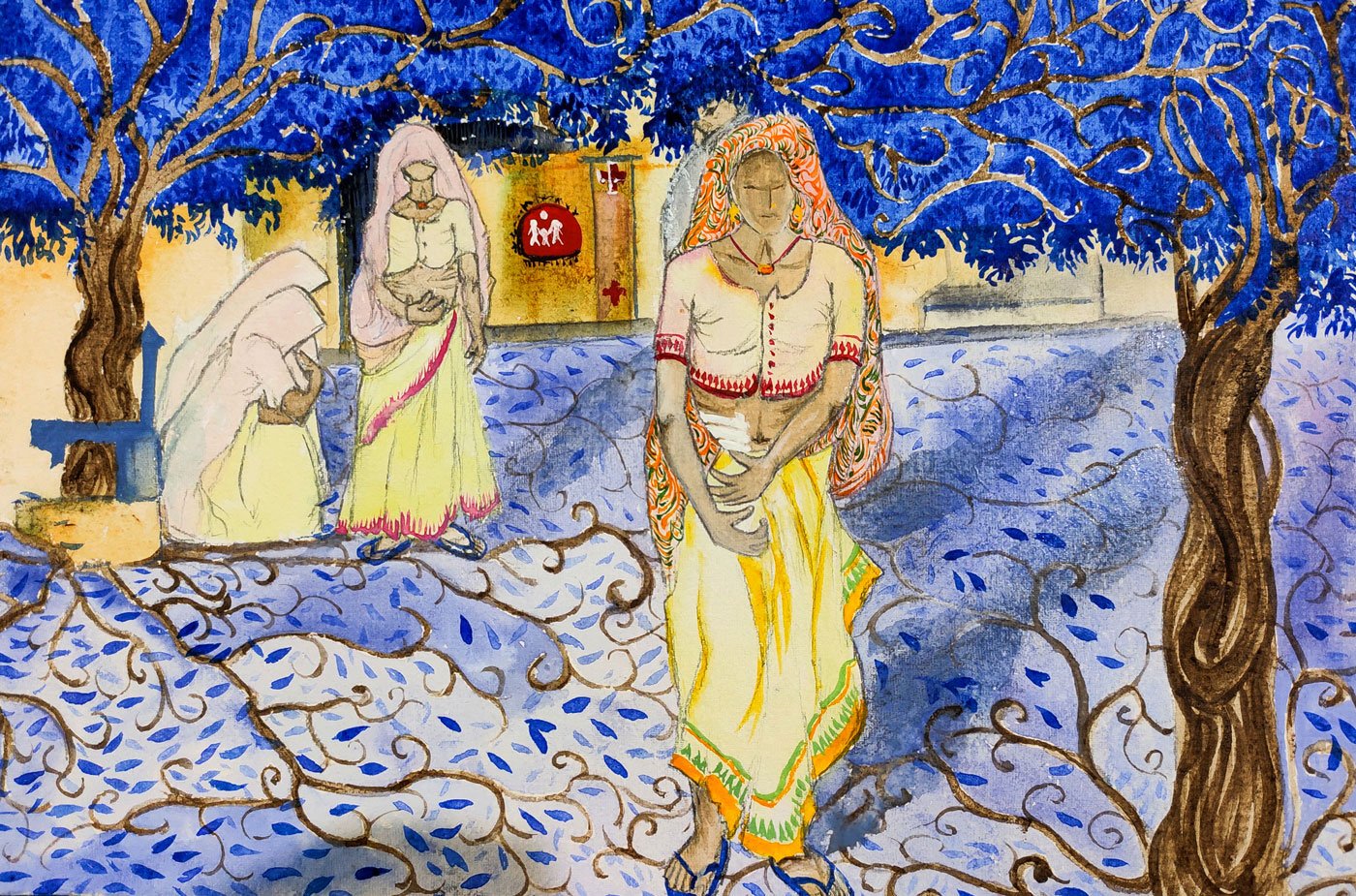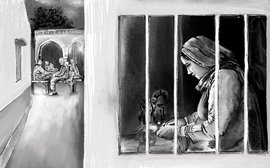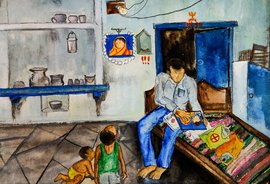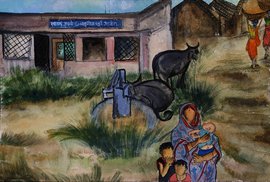How many hospitals have you consulted in the last three years?
A shadow of fatigue and despair clouds the faces of Susheela Devi and her husband Manoj Kumar at the question. The two ( their names have been changed here ) have lost count of the number of hospitals, tests and conflicting diagnoses they have received since Susheela first got a nasbandi (a sterilisation procedure) at Madhur Hospital in Bandikui town in June 2017.
A year after the birth of their son, the fourth child to follow three girls in 10 years of marriage, the couple decided on a tubal ligation for 27-year-old Susheela, hoping to manage their family and life better. The private hospital in Bandikui, 20 kilometres from their village, Dhani Jama in Rajasthan’s Dausa tehsil , was their preferred choice, even though there is a government public health centre (PHC) in Kundal village, just three kilometres from Dhani Jama.
“The sterilisation camps at the [government] health centres are held mostly during the winter months. Women prefer to have the procedure during the cold months because it heals faster. We take them to private hospitals in Dausa and Bandikui if they want to get the surgery during the summer months,” says Suneeta Devi, 31, an accredited social health activist (ASHA). She accompanied the couple to Madhur Hospital, a general hospital with 25 beds. It’s registered under a state family welfare scheme, and therefore Susheela was not charged for the tubectomy. Instead, she received the incentive amount of Rs. 1,400.
A few days after the surgery, Susheela got her period, and with that began a cycle of excruciating pain and fatigue that was to continue for much of the next three years.
“When the pain first began, I gave her the painkillers we had at home. It helped mildly. She would cry every month when she menstruated,” says 29-year-old Manoj.
“The pain intensified, and the excessive bleeding gave me nausea. I was always weak,” says Susheela, a homemaker who has studied up to Class 8.
When this went on for three-odd months, the couple hesitatingly went to the PHC in Kundal.
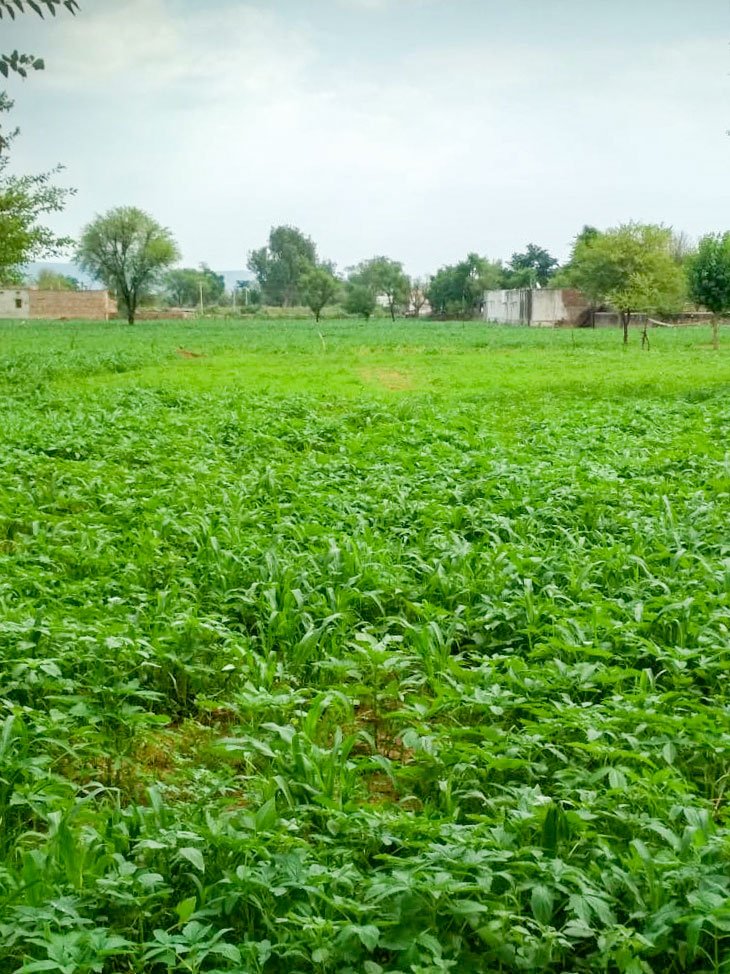
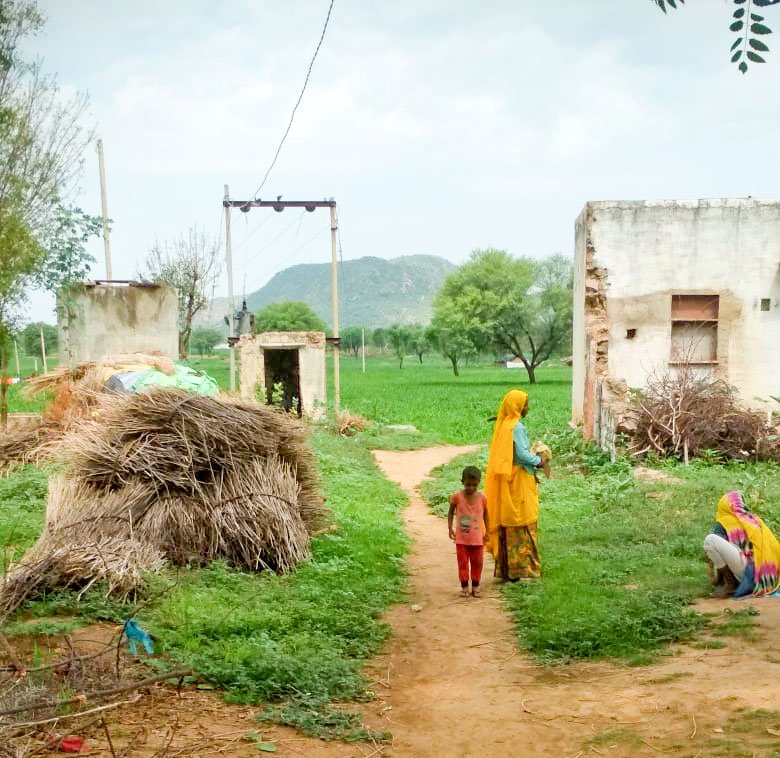
Susheela and Manoj from Dhani Jama village have been caught in a web of hospitals, tests and diagnoses since Susheela's nasbandi
" Vahan zyadatar staff hota kahan hai ? [There’s hardly ever any staff present there]," Manoj says, telling us that the PHC handed over tablets to relieve the pain without even checking Susheela.
By then, her debilitating pain had begun to impact everything in their marital life. Five months after the sterilisation, Susheela returned to Madhur Hospital in Bandikui to see the doctor who had carried out the procedure.
A series of tests later, which included an abdomen sonography, the doctor declared it was an infection in the fallopian tubes and prescribed a three-month course of medication.
“How did my wife develop an infection? You didn’t perform the surgery properly?" Manoj had demanded angrily of the doctor. The couple remember the response they got: “ Humney apna kaam sahi kiya hai, yeh tumhari kismat hai [We did our job well. This is your luck/fate],” the doctor had said, before walking off.
For the next three months, every 10 days or so, the couple left home at 10 a.m. for Madhur Hospital on their motorcycle. The entire day would be spent in check-ups, tests and buying the prescribed medicines. Manoj would skip work and their three daughters (now aged nine, seven and five) and son (now four years old), stayed with their grandparents in Dhani Jama. Each trip cost them Rs. 2,000 to Rs. 3,000.
By the end of the three-month treatment, Manoj had spent most of the Rs. 50,000 he had borrowed from relatives. Though a BA graduate, the only jobs he was able to get were beldari (labouring on construction sites or fields), earning roughly Rs. 10,000 in a month when he found regular work. While Susheela’s condition remained unchanged, the family was accumulating debt and losing income. Life was becoming a blur, Susheela says.
“I was either collapsing with pain when menstruating, or too weak to function for days after,” she says.
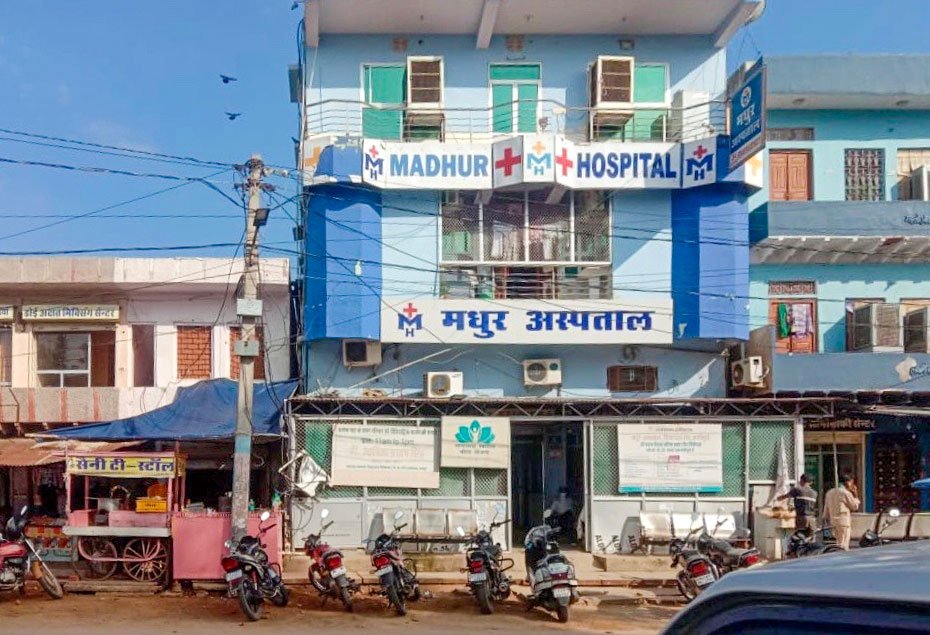
Susheela first got a nasbandi at Madhur Hospital, Bandikui town, in June 2017
In November 2018, Manoj decided to take his wife to the District Hospital in Dausa, the district headquarters, 20 kilometres from their village. The day they went to the 250-bed hospital, which has a separate department for maternal health services, a long queue of patients was curling through the corridor.
At the Rajdhani Hospital and Maternity Home in Dausa, which someone in the queue at the District Hospital had mentioned, Susheela’s old sonography report was rejected and a fresh one asked for.
Confused and unsure what to do next, Manoj took the advice of someone in the village, and took Susheela to the Khandelwal Nursing Home in Dausa a few weeks later. Another sonography was done here and the report suggested that Susheela had a swelling on her fallopian tubes. Another round of medication followed.
“People working at private hospitals know that villagers do not understand a thing about these procedures. They know whatever they say, we will accept,” Manoj says, now quite confused about how they landed up at a third private hospital in Dausa, Shri Krishna Hospital, where the doctor, after more tests and another sonography, said Susheela had a minor swelling of the intestines.
“One hospital would tell us that the tubes are swollen, another would say there is an infection, and the third would talk about my antariya [intestines]. Each hospital prescribed medicines accordingly. We were going mad heading from one place to another, no longer sure who was telling the truth and what was happening,” Susheela says. She took the course of treatment prescribed at each hospital, but nothing alleviated her symptoms.
The visits to these three private hospitals in Dausa sent Manoj’s debt up by another Rs. 25,000.
Everyone in the family, including a distant relative who lived in Jaipur, then suggested that a good hospital in the state capital, 76 kilometres from their village, would be their best bet.
Once again, the couple set out, spending money they did not have, to get to Jaipur where, at the Dr. Sardar Singh Memorial Hospital, another sonography revealed that Susheela had a ‘ ganth ’ (a growth) in the uterus.
“The ganth will only grow bigger, the doctor told us. He said very clearly that I would have to undergo a bacchedani ka operation [hysterectomy to remove the uterus],” Susheela tells us.
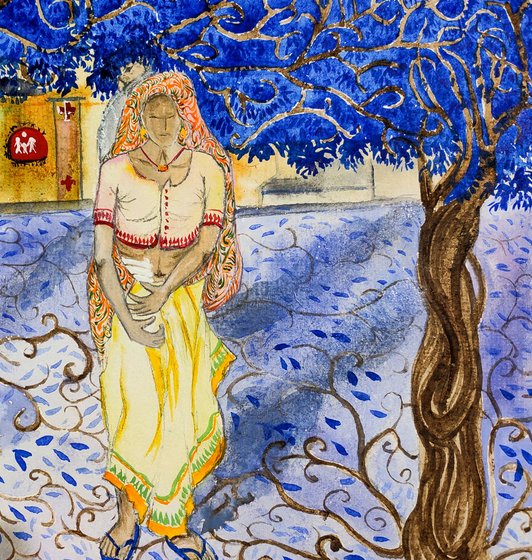
Illustration: Labani Jangi
The RTI showed that at three of the five private hospitals (in Bandikui town of Rajasthan) that provided information, 286 of the 385 surgeries conducted on women between April and October 2010 had been hysterectomies... The majority of the women were under 30, and the youngest was just 18 years old
So finally, on December 27, 2019, 30 months and at least eight hospitals later, Susheela underwent a surgery to remove her uterus at the Shubhi Pulse Hospital and Trauma Centre, yet another private hospital in Dausa. Manoj spent Rs. 20,000 on the hysterectomy and an additional Rs. 10,000 on follow-up medication.
The couple were forced to accept that a hysterectomy was the only way to break the cycle of pain and debt.
We recounted Manoj and Susheela’s ordeal to Durga Prasad Saini, an advocate at the Akhil Bhartiya Grahak Panchayat, a non-governmental organisation that had filed a Right to Information (RTI) application in November 2010 to investigate the number of hysterectomies conducted at five private hospitals in Bandikui.
The RTI showed that at three of the five private hospitals that provided information, 286 of the 385 surgeries conducted on women between April and October 2010 had been hysterectomies. The general hospitals in question were Madhur Hospital (where Susheela had the sterilisation), Madaan Nursing Home, Balaji Hospital, Vijay Hospital and Katta Hospital. The majority of the women who had undergone hysterectomies were under 30, and the youngest was just 18 years old. Most of the women belonged to the Scheduled Caste and Scheduled Tribe communities of the district, such as Bairwa, Gujjar and Mali. Manoj and Susheela are from the Bairwa community, and 97 per cent of the population of their village, Dhani Jama, belongs to the Scheduled Castes.
“We were discussing the problem of female infanticide when someone pointed out par kokh hai kahan [how many women have the womb anyway],” Saini recounts, a remark that made them suspect something was amiss.
“We believed it [the large number of unnecessary hysterectomies] was the result of a nexus between doctors, PHC staff and ASHA workers. But we couldn’t prove it,” Saini reports. The Bandikui findings were included in a public interest litigation (PIL) against "hysterectomy scams" at profiteering private hospitals in Rajasthan, Bihar and Chhattisgarh, filed in the Supreme Court in 2013 by Dr. Narendra Gupta, founder of the Rajasthan-based non-profit Prayas. The petition sought compensation for the women who had had the surgery, as well as appropriate policy changes.
"Many of the women interviewed in Bihar, Chhattisgarh and Rajasthan were misled into believing that there was an emergency and that the surgery was urgent," the PIL noted. "They were made to believe that they might get cancer if they did not comply with the doctors’ advice."
!['We believed it [the unnecessary hysterectomies] was the result of a nexus...But we couldn’t prove it', said advocate Durga Prasad Saini](/media/images/05-Image-11-AB.max-1400x1120.jpg)
'We believed it [the unnecessary hysterectomies] was the result of a nexus...But we couldn’t prove it', said advocate Durga Prasad Saini
The petition added that essential information – including on the risks and long-term side-effects of hysterectomy – was often withheld from the women, making it doubtful whether informed consent was taken before they were rushed into surgery.
The private hospitals and doctors denied the charge, as reported in the media, saying that surgeries had been conducted only when necessary.
“Private hospitals in Dausa district now carry out hysterectomies only when it is prescribed. But that wasn’t the case earlier. It was unchecked and rampant. Villagers were duped. Whatever abdominal issues related to menstruation women would come with, they would be sent from one place to another and finally told to remove the uterus,” Saini says.
Dr. Gupta's petition also prompted the government to include hysterectomies in the fourth round of the National Family Health Survey ( NFHS-4 ) conducted during 2015-16, which revealed that 3.2 per cent of women between the ages of 15 and 49 had undergone hysterectomies in India. More than 67 per cent of these procedures were performed in the private healthcare sector. In Rajasthan, 2.3 per cent of women between 15 and 49 years had had a hysterectomy, according to NFHS-4.
Many of the women contacted by Prayas’s fact-finding teams after their hysterectomies stated that symptoms continued even after the surgery. Two months after her hysterectomy, when we met Susheela in her home, she was lifting buckets and doing other household chores, though some wounds from the surgery were still tender and she had been asked to remain cautious. Manoj had returned to work and more than half of what he was earning was going towards repaying the roughly Rs. 1 lakh that he had borrowed from moneylenders and relatives to handle her persistent health problems. They had also sold Susheela’s jewellery for Rs. 20-30,000.
The couple, still reeling from the events of the last three years, remain unsure what really caused the prolonged pain and bleeding, and whether removing her uterus was finally the correct treatment or not. They are just relieved that so far Susheela's pain has not recurred.
“ Paisa lagate lagate aadmi thak jaye toh aakhir mein yahi kar sakta hai ,” Manoj says – A person can get exhausted spending money, and in the end you can only hope you have done the right thing.
PARI and CounterMedia Trust's
nationwide reporting project on adolescent girls and young women in rural India
is part of a Population Foundation of India-supported initiative to
explore the situation of these vital yet marginalised groups, through the
voices and lived experience of ordinary people.
Want to republish this article?
Please write to
[email protected]
with
a cc to
[email protected]
